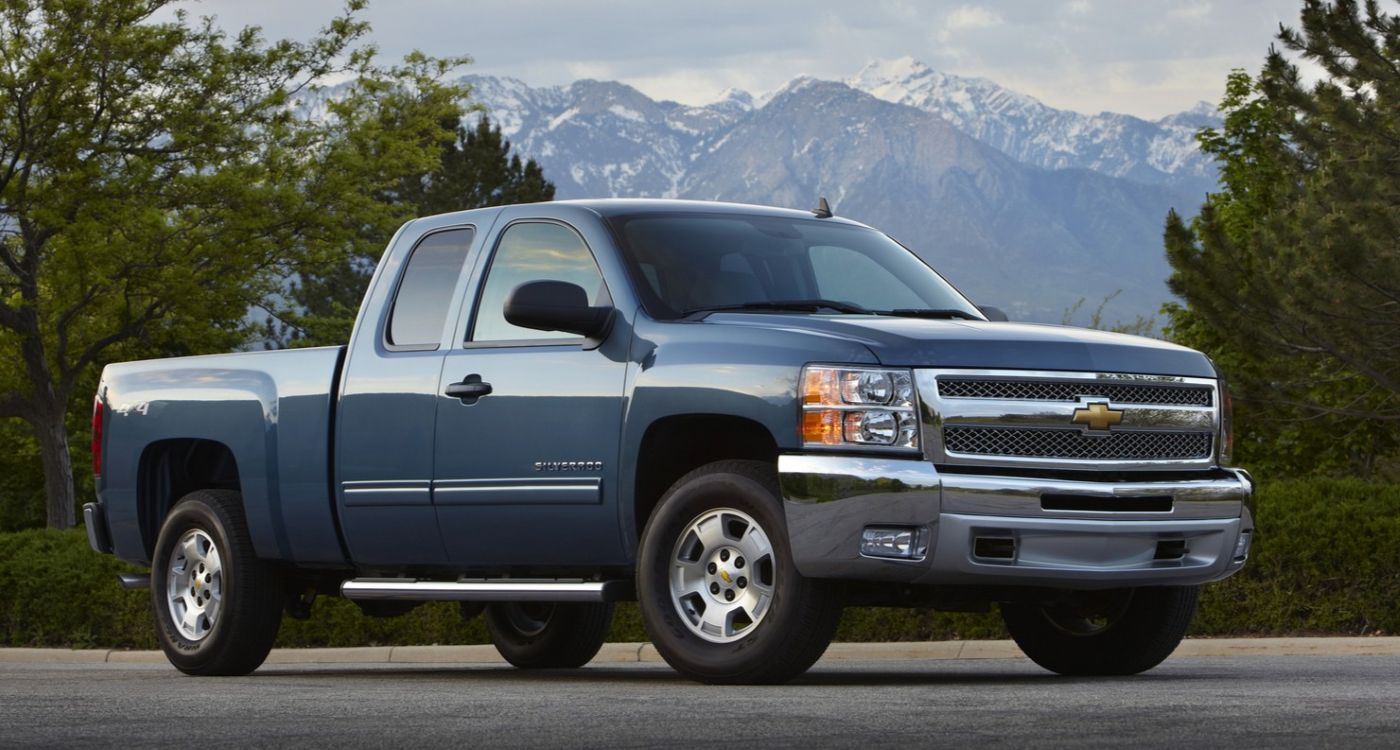If you’ve ever driven a pickup that constantly drifts to one side, chews through tires unevenly, or just feels “off” at highway speeds — you know how frustrating alignment issues can be.
And we’re not just talking about lifted rigs or abused work trucks. Some pickups roll off the factory floor with alignment quirks baked into the suspension geometry. Others? They’re bulletproof — staying laser-straight for years without needing adjustment, even after hard use.
Alignment problems aren’t just annoying. They can lead to premature tire wear, poor fuel economy, steering issues, and even safety hazards if left unchecked.
But not all trucks are created equal. Some models have well-engineered, durable suspension systems that hold their settings even under load or after off-roading. Others seem to fall out of spec every time you hit a pothole.
5 Pickup Trucks That Rarely Lose Alignment
In this article, we’re diving into both ends of the spectrum — highlighting five pickup trucks known for keeping their alignment mile after mile, and five that constantly seem to pull, drift, or wear out tires faster than they should.
Whether you’re shopping for a new truck, diagnosing steering issues in your current one, or just curious which models get it right (and which miss the mark), this breakdown will give you the insight you need to make smarter decisions behind the wheel — and under it.
1. Toyota Tacoma (2005–2023)
The Tacoma isn’t just famous for its reliability — it also holds alignment impressively well. Thanks to its tight suspension tolerances, solid frame construction, and well-designed steering geometry, Tacomas often stay aligned for years without adjustment. Owners frequently report even tire wear and no pulling, even after moderate off-road use.
Why it stays aligned: Tough upper and lower control arms, solid front suspension layout, and robust steering rack.
The Toyota Tacoma first hit the scene in 1995 as a compact pickup truck. Over the course of the next two generations, Toyota gradually evolved the Tacoma into a larger, more robust model, ultimately positioning it within the mid-size pickup truck category.
Now, with the arrival of the 2024 model, Toyota introduces the fourth generation of the Tacoma — a vehicle designed to uphold and advance the legacy of one of North America’s most iconic and best-selling pickups in recent decades. This new iteration will be offered in a broad range of trims: SR, SR5, TRD PreRunner, TRD Sport, TRD Off Road, Limited, TRD Pro, and Trailhunter.
Though it stays true to the familiar “Tacoma-ness” that fans have come to expect, the 2024 version marks a major departure in terms of engineering.
It is the first Tacoma built on Toyota’s TNGA-F global truck platform, with a complete redesign from the ground up. The truck now features a boxier silhouette, giving it a tougher, more contemporary off-road-ready appearance that speaks directly to its enhanced off-road performance.
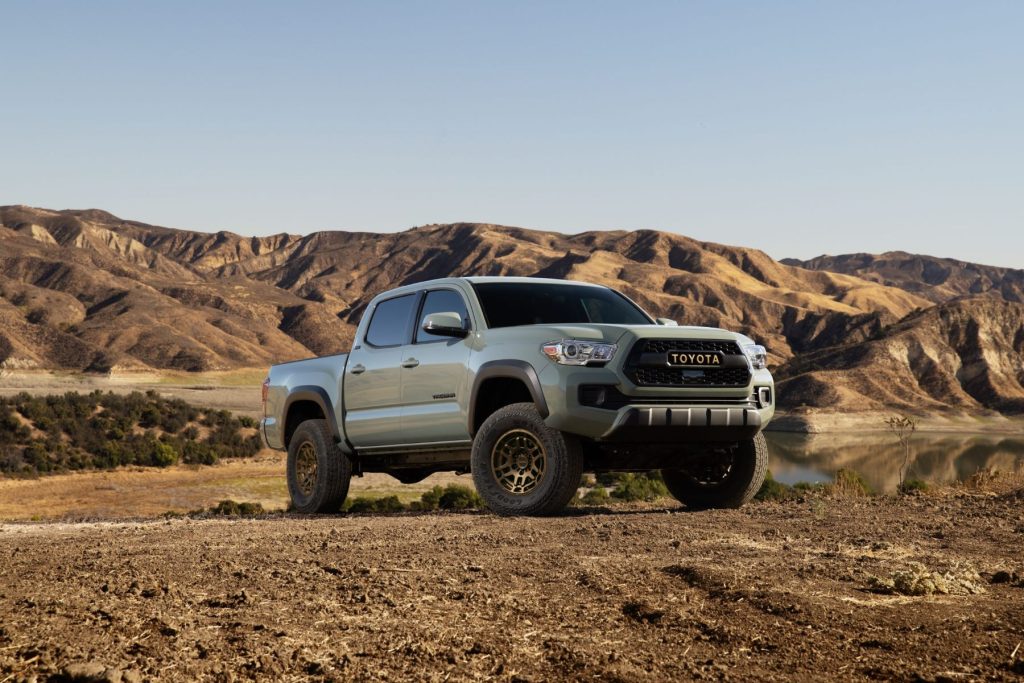
One of the biggest technical upgrades is the switch from traditional leaf springs to a new multi-link rear suspension, which improves both handling and overall ride stability. Additionally, the TRD Off-Road trim will come equipped with Bilstein remote reservoir monotube shocks, enhancing heat dissipation for more demanding terrain.
To match the Tacoma’s refined handling capabilities, Toyota boosted the powertrain options. The standout is the newly available iForce MAX hybrid system, which delivers an impressive 326 horsepower and 465 lb-ft of torque — more than enough muscle for tackling serious off-road challenges.
When extra traction is needed, the electronically controlled locking rear differential can be activated to split power 50/50 between the rear wheels.
For those seeking a more visceral connection with the vehicle, Toyota includes a six-speed intelligent manual transmission option. This system incorporates automatic rev-matching and anti-stall features, catering to enthusiasts who want a more engaged, hands-on driving experience during off-road excursions.
For even greater comfort and endurance on difficult trails, the TRD Pro trim introduces the IsoDynamic Performance Seat. This innovative seat design permits simultaneous vertical and lateral movement to significantly reduce the jarring effects of bumps and vibrations, resulting in a smoother and less fatiguing ride.
The Trailhunter variant is purpose-built for overlanding enthusiasts, offering a near turn-key adventure rig with no aftermarket additions needed. It’s fitted with an Adaptive Variable Suspension, a built-in high-output air compressor, and a heavy-duty bed rack strong enough to support roof-top tents or additional camping gear.
Enhancing the in-cabin experience, the 2024 Tacoma also features a high-resolution 14-inch touchscreen infotainment system paired with a premium JBL 10-speaker audio setup.
One particularly clever addition is a portable JBL Bluetooth speaker, which functions as the vehicle’s center speaker while docked but can also be removed for up to six hours of wireless audio — perfect for tailgates, campouts, or any gathering where the Tacoma becomes the life of the party.
Also Read: Top 10 Long-Lasting Cars That Get Over 30 MPG
2. Ford F-150 (2015–2020)
The aluminum-body F-150 generation has proven surprisingly resilient to alignment drift. Ford’s improved front-end geometry in this generation minimized tire wear issues seen in earlier models. Regular drivers find the truck tracks straight for tens of thousands of miles — assuming no curb strikes or pothole abuse.
Why it stays aligned: Improved independent front suspension and better camber/caster design than prior generations.
In response to the wave of all-new full-size pickups launched by its biggest rivals, Ford recognized the need to rethink its approach for the 13th generation of America’s top-selling line of full-size trucks.
Judging by early impressions, the automaker seems to have pulled off something genuinely groundbreaking with the release of the 2015 Ford F-150.
At first glance, the extent of change in the new F-150 may not be immediately obvious. In deference to the traditionally conservative aesthetic preferences of many pickup truck buyers, Ford opted for modest styling updates.
The most noticeable exterior changes are the redesigned grille and uniquely contoured headlights, which subtly signal that this is an entirely new generation of F-150.
However, the most transformative updates are beneath the surface. Ford engineers made sweeping changes by incorporating aluminum throughout key parts of the truck—ranging from the hood and body panels to the bed—in an effort to trim as much as 700 pounds from the truck’s overall weight.
To address any assumptions about aluminum being weak, Ford emphasizes that it used military-grade aluminum alloys in various thicknesses, many of which surpass steel in strength while weighing significantly less. All of this sits atop a ladder-reinforced frame that now incorporates a much higher percentage of high-strength steel compared to the previous version.
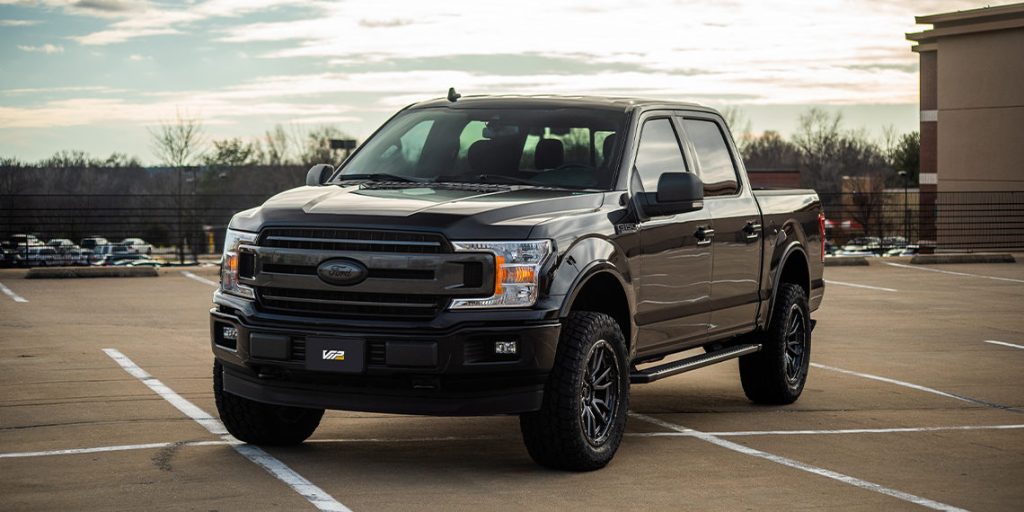
The benefits of cutting weight are substantial. Within a fixed GVWR (gross vehicle weight rating), a lighter truck can carry a heavier payload. The same goes for GCWR (gross combined weight rating) and its impact on towing capacity. A lighter overall build also improves acceleration and fuel economy.
In fact, the new 2.7-liter turbocharged EcoBoost V6 offers such strong fuel efficiency that the two-wheel-drive F-150 earns a combined fuel economy rating of 22 mpg—just one mile per gallon shy of the 23 mpg rating for the more expensive diesel-powered Ram 1500 EcoDiesel.
Ford still intends to dominate in traditional truck performance categories too, boasting that a properly equipped F-150 can tow up to 12,200 pounds when paired with the larger 3.5-liter turbocharged V6.
In terms of technology, the 2015 F-150 introduces a suite of cutting-edge features. It’s equipped with multiple video camera systems, including a trailer hitch assist feature with a dynamic guide line, allowing drivers to connect trailer and hitch without help.
An optional 360-degree bird’s-eye camera system makes navigating tight parking lots and construction zones easier. Other notable upgrades include a new 8-inch productivity display embedded in the gauge cluster, along with advanced safety technologies such as lane-keeping assist and adaptive cruise control.
Given the truck’s many configurations and options, there is likely a 2015 F-150 model to suit nearly every type of buyer who has ever even considered owning a pickup.
That said, alternatives in the segment are also worth considering. The 2015 Ram 1500 continues to impress with its composed ride, quiet cabin, and efficient diesel option. Likewise, the 2015 Chevrolet Silverado 1500 stands out for its balanced strengths.
Still, with all the notable advancements Ford has introduced, the redesigned 2015 F-150 stands out as a compelling contender in the full-size pickup class. In short, if you’re shopping for a cutting-edge full-size truck in 2015, Ford’s latest F-150 may make your final choice a lot more difficult.
3. Chevrolet Silverado 1500 (2014–2018)
This generation of Silverado benefitted from significant upgrades in chassis stiffness and suspension refinement. GM refined the front control arms and steering knuckles, resulting in a truck that keeps its wheels pointed forward even after hauling and towing duty.
Why it stays aligned: Stronger subframe design and recalibrated suspension tuning prevent toe and camber drift.
The full-size pickup truck segment has undergone a wave of positive transformation in recent years. Many of the most iconic models have been redesigned, resulting in notable improvements in power, fuel efficiency, and overall refinement.
The 2015 Chevrolet Silverado 1500, which received a comprehensive overhaul just the year prior, continues to embody these advancements.
This latest iteration delivers exactly what longtime fans of Chevy full-size trucks have come to rely on: strong towing and hauling performance, as well as a wide range of configurations to choose from. What truly distinguishes this generation, however, is its refined, high-quality interior and an impressively smooth daily driving experience.
When you step inside the Silverado, you won’t find a flashy or trend-driven design—but what you do get is ample room in every direction, particularly in the popular crew cab configuration, along with an interior built with high-grade materials.
While driving, the cabin remains notably quiet, and most trims deliver a ride that leans toward comfort, almost reaching a relaxed quality. If you plan on putting your truck to serious work, one of the three available engines will be up to the task. The base V6 is not to be underestimated—it allows the Silverado to tow as much as 7,600 pounds when properly equipped.
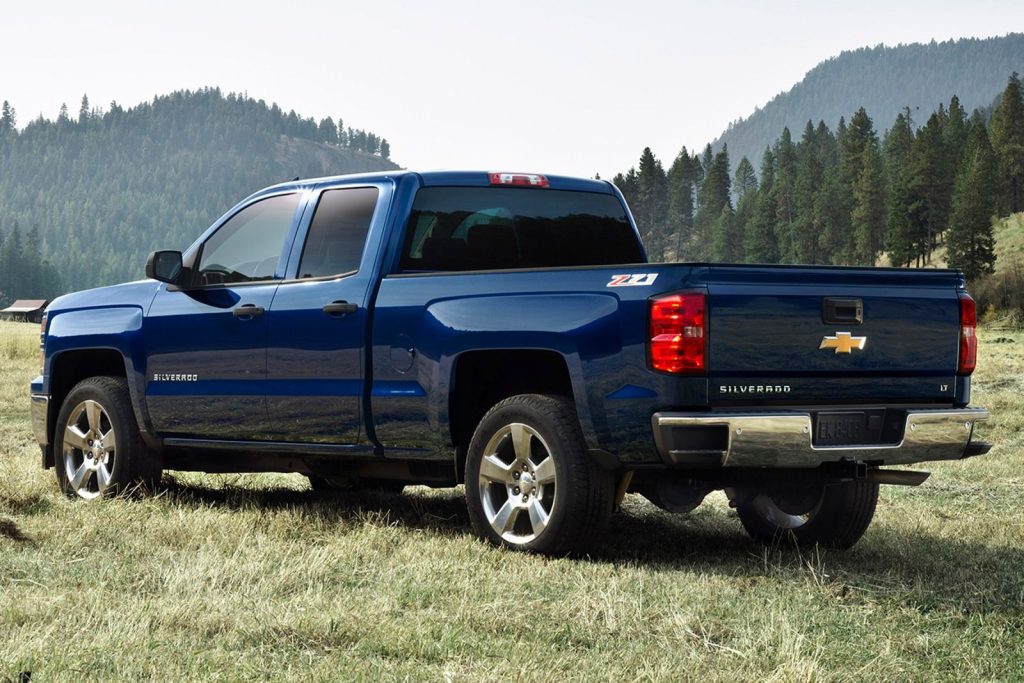
For those who require more muscle, the available V8 engines are equipped with cylinder deactivation technology, allowing them to conserve fuel during lighter-duty operations when full power isn’t needed. A major addition for 2015 is the new eight-speed automatic transmission, which is now offered with the larger 6.2-liter V8 engine.
When configured with this powertrain, the Silverado is capable of towing up to 12,000 pounds, assuming it’s properly equipped. The two extra forward gears offered by this transmission are expected to translate into both improved towing performance and better fuel economy—especially beneficial when hauling heavy loads.
However, there are still some limitations to consider. Just as in the previous year, the 6.2-liter V8 engine remains exclusive to higher trim levels, and the same restriction applies to the new eight-speed automatic transmission. That means accessing this enhanced capability will come at a higher cost.
Meanwhile, the standard six-speed transmission, which is included with most 2015 Silverado 1500 models, features widely spaced gear ratios that can make it challenging to tow at or near the truck’s maximum capacity—particularly when paired with the V6 or the available 5.3-liter V8.
4. Honda Ridgeline (2017–2023)
The Ridgeline is unconventional — it’s a unibody truck with fully independent suspension. But that design actually helps it stay in alignment better than most body-on-frame pickups. Owners report rare need for alignments unless hitting major road hazards.
Why it stays aligned: Car-like suspension geometry and fewer heavy-duty suspension stress points.
The Honda Ridgeline has consistently held its spot as the top-ranked midsize pickup truck, and for good reason. No other truck in its segment quite matches the Ridgeline’s combination of a smooth, car-like ride, clever and innovative storage solutions, and a cabin that remains quiet and comfortable across a variety of driving conditions.
It also offers more than enough capability in terms of towing, hauling, and off-road performance to handle the bulk of tasks the average driver will need—whether for work or recreation.
For the 2021 model year, Honda has made a few key changes aimed at enhancing the truck’s visual appeal, adding just enough to keep things fresh without altering the core attributes that make the Ridgeline stand out.
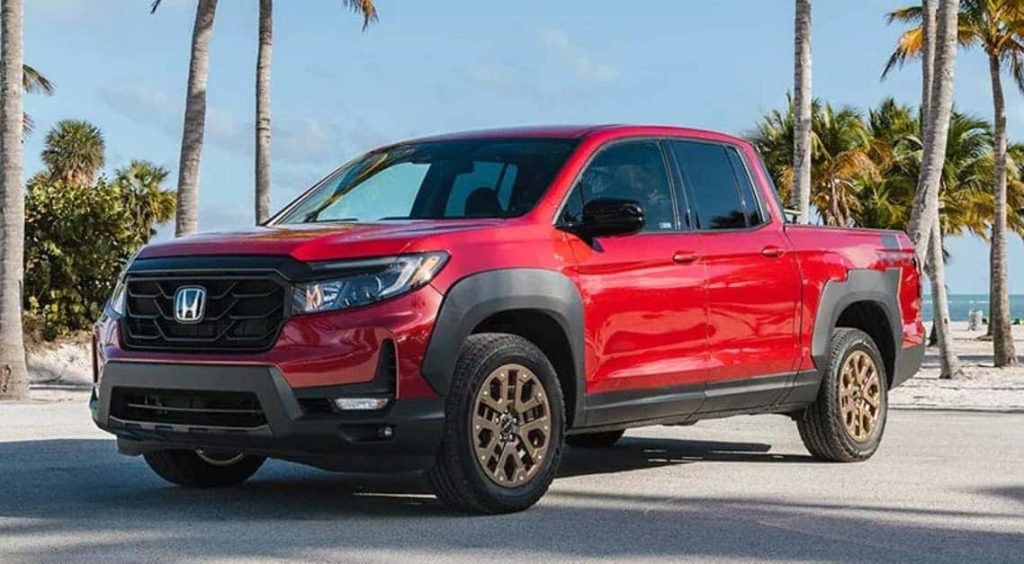
Interestingly, Honda’s goal for 2021 is to make the Ridgeline look more like a traditional truck and less like a Honda Pilot with a cargo bed tacked onto the rear. From the windshield forward, the truck gets new sheet metal that gives it a squarer, more aggressive stance than before.
In the rear, there’s a redesigned bumper along with a sporty dual exhaust that contributes to a tougher look. Honda has also introduced a new HPD (Honda Performance Development) appearance package, which includes squared-off fender guards, bold graphics, and distinctive bronze-colored wheels—all of which add to the Ridgeline’s truck-like aesthetic.
Mechanically, very little has changed, but that’s not a bad thing. The Ridgeline now comes standard with all-wheel drive for 2021, which is a welcome upgrade that enhances traction and versatility across different terrains.
Honda has also finally added a volume knob to the infotainment system, addressing a long-standing annoyance for many drivers. Otherwise, the truck remains largely the same—and that’s a strength, not a flaw. The 2021 Ridgeline continues to deliver a driving experience that rivals can’t quite match, especially when it comes to refinement and comfort.
5. Ram 1500 (2019–2023)
The fifth-gen Ram 1500 offers a smooth ride and excellent suspension design. Its redesigned front control arms and coil-spring rear end (instead of leaf springs) reduce the chance of misalignment. Whether you’re commuting or hauling loads, it generally keeps all four wheels in check.
Why it stays aligned: Modernized suspension design and tighter factory tolerances.
For 2023, Ram introduced a new limited-edition trim to its 1500 lineup: the Emergency Medical Service (EMS) edition. As part of Ram’s Built to Serve series, the EMS edition pays tribute to first responders, incorporating unique design elements and American flag decals on the bed sides to symbolize its honor-based theme.
Offered in either Hydro Blue or Bright White paint, the 1500 EMS is distinguished by a blacked-out grille and front fascia, Technical Gray 20-inch aluminum wheels, and sleek black exhaust tips.
Inside, the cabin features exclusive front-seat décor specific to this edition. To enhance its performance, the EMS trim comes equipped with the 4×4 Off-Road Group package as standard.
This package includes practical additions like tow hooks, various underbody skid plates for protection, and an electronically locking rear differential. Notably, while the 2023 Ram 1500 initially launched with a diesel V-6 option, that engine has since been discontinued.
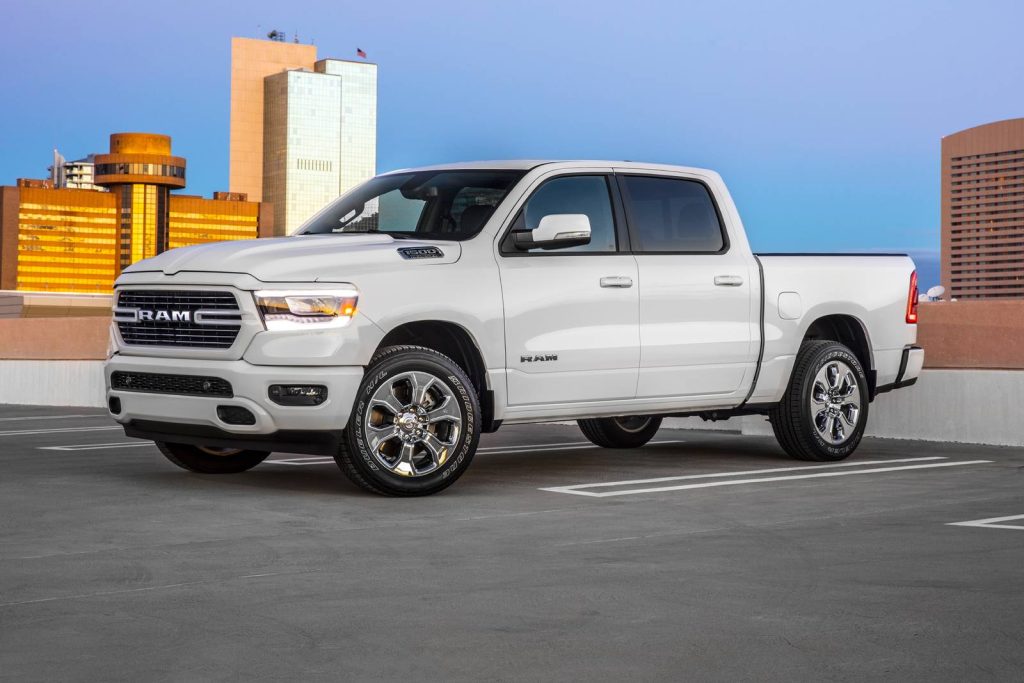
Although the 702-horsepower Ram 1500 TRX (covered in a separate review) overshadows the Rebel in sheer performance appeal, the Rebel still stands out as the go-to choice among the half-ton Ram models. For optimal configuration, choosing the crew cab with four-wheel drive is a smart move.
Opting for the V-8 engine over the standard V-6 adds needed power, and springing for the optional air suspension is well worth it due to its selectable ride height feature. Since adding the air suspension requires either the Level 1 or Level 2 equipment package, the Level 2 package is the better value.
It brings a robust collection of features, including remote start, a 115-volt power outlet, front and rear parking sensors, power-adjustable pedals, and passive hands-free entry. Another smart upgrade is the optional 33-gallon fuel tank, which significantly extends the truck’s driving range compared to the standard 26-gallon tank.
Finally, the Safety and Convenience package—featuring adaptive cruise control, automatic high-beam headlights, and lane-keeping assist—along with the Multifunction Tailgate and spray-in bedliner, round out a well-equipped and versatile truck.
5 Pickup Trucks That Constantly Pull or Lose Alignment
In this article, we’re zeroing in on the latter group—pickup trucks that have developed a reputation for frequently pulling or losing alignment.
Whether it’s due to suspension design, weight distribution, or factory-quality inconsistencies, these five models have left more than a few drivers fighting the steering wheel. If you’re shopping for a truck—or trying to figure out why your current one won’t drive straight—this list is worth a read.
1. Jeep Gladiator (2020–Present)
Despite its off-road prowess, the Gladiator is infamous for wandering and pulling — especially at highway speeds. Its solid front axle and steering geometry make it sensitive to road crown and minor suspension changes. Lift kits only make it worse.
Why it pulls: Solid front axle and vague steering feel prone to misalignment and bump steer.
The 2020 Jeep Gladiator picks up the mantle left behind by the Comanche, Jeep’s last pickup with a cargo bed, which disappeared from the lineup in the early 1990s.

Drawing its DNA from the iconic Wrangler, the Gladiator merges a four-door cabin with a five-foot bed and includes all the off-road essentials Jeep fans expect. These features encompass oversized off-road tires, a rugged suspension setup, and standard four-wheel drive.
Although a diesel-powered V-6 is slated for release at a later date, the current offering is limited to a gasoline engine. With its tough-as-nails exterior and removable body panels, it stands out as both a stylish and highly adaptable vehicle.
2. Chevy Colorado / GMC Canyon (2015–2022)
The mid-size twins from GM have had consistent complaints about pulling and uneven tire wear. Many owners note the truck pulling to the right even after repeated alignments. Toe settings often don’t hold, and suspension component wear tends to accelerate the issue.
Why it pulls: Weak tie rods and subpar alignment specs from the factory.
For many drivers, the practicality of a pickup is appealing, but not everyone needs the size or bulk of a full-size truck. That’s where compact pickups have traditionally filled the gap.
In recent years, however, the choices in this segment have been limited—Chevrolet even halted production of its compact Colorado for several years. But 2015 marks a shift in that trend, as Chevy reenters the scene with the fully redesigned 2015 Colorado.
The new Colorado—alongside its GMC sibling, the Canyon—has grown compared to the model Chevrolet retired three years ago. It’s now roughly the same size as its main rivals, the Toyota Tacoma and Nissan Frontier.
That shift means the Colorado’s real strengths lie not in its size advantage but in what it offers under the hood and inside the cabin. Fuel-efficient powertrains, a more refined and comfortable interior, and access to contemporary features give it a serious edge in a segment that’s been stagnant for too long.
While Chevrolet has eliminated the regular cab configuration, buyers can now choose between an extended cab with a 6-foot, 2-inch bed or a crew cab with four full-size doors and either a 5-foot, 2-inch short bed or the same 6-foot, 2-inch long bed.
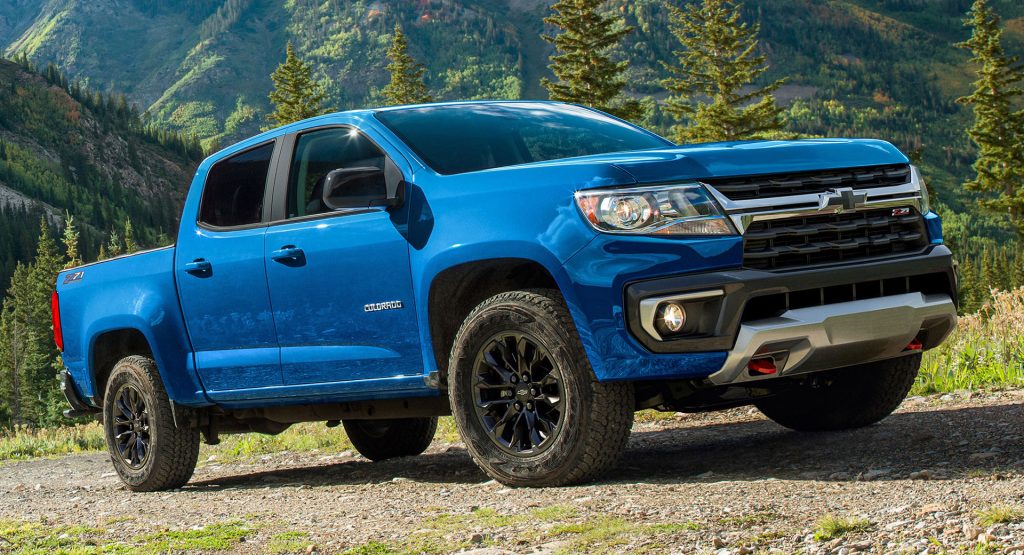
A 2.5-liter four-cylinder engine—geared toward fuel savings—comes standard in extended cab versions. Most crew cab models come equipped with a more robust 3.6-liter V6, which delivers enough power to achieve a best-in-class towing capacity of 7,000 pounds when properly outfitted.
Where the new Colorado really distances itself from both its predecessor and current competitors is in refinement. Chevrolet put significant effort into crafting a well-insulated, attractive cabin that feels quieter and more upscale than what you’ll find in many rivals.
The truck also comes with modern features, including a standard rearview camera and an available 8-inch MyLink touchscreen infotainment system with app integration and a built-in 4G LTE WiFi hotspot. Simply put, the new Colorado is one of the most advanced midsize pickups currently available.
That said, the truck isn’t without a few downsides. Its new and improved nature comes with a steeper price tag, so expect to pay a bit more than you might for older or less-equipped competitors.
Additionally, the cost and fuel economy benefits that once made midsize trucks so appealing compared to full-size pickups have narrowed. That shrinking gap might make the Colorado slightly less compelling for buyers focused solely on budget or efficiency.
3. Ford Ranger (2019–2023)
The revived Ranger looks sharp but has struggled with alignment stability. Many owners report a persistent pull to the left or right, especially under braking or highway cruising. Even after dealer alignments, issues sometimes return within a few thousand miles.
Why it pulls: Inconsistent factory alignment calibration and suboptimal caster angles.
Not everyone needs the brute strength or size of a full-size pickup, and that’s exactly where midsize trucks earn their keep. In truth, many of today’s midsize models are as large as full-size pickups from just a decade ago, yet they remain the more efficient, maneuverable, and often more affordable choice.
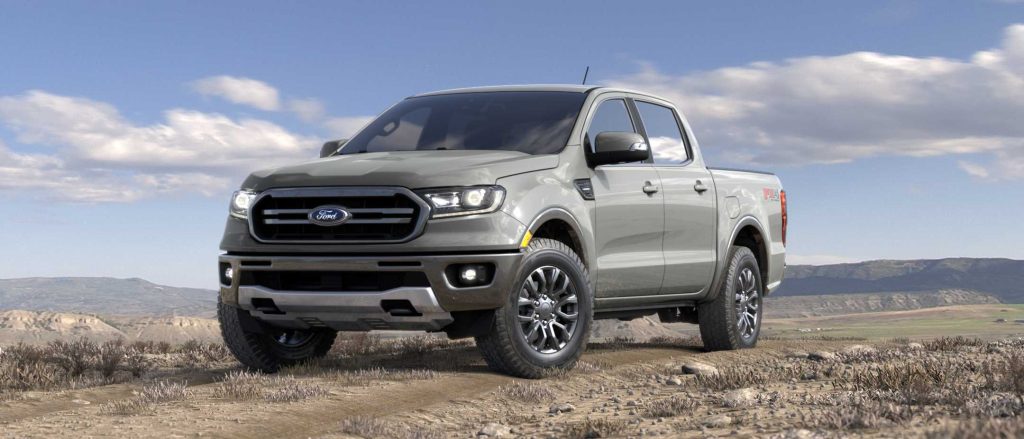
Among these options is the Ford Ranger, a relatively new entrant to the U.S. midsize truck segment, reintroduced just two years ago after a lengthy absence.
However, instead of designing an all-new truck for the American market, Ford opted to adapt a version of the Ranger it had already been selling internationally for about ten years. As a result, the Ranger doesn’t quite measure up to competitors that have benefited from more recent ground-up redesigns.
4. Nissan Frontier (2005–2021)
This aging truck has a stout frame but a front suspension design that hasn’t aged well. It’s especially prone to toe and camber shifts after mild off-road driving or hitting large potholes. Drivers often complain of frequent steering corrections and premature tire wear.
Why it pulls: Older suspension geometry and lack of modern alignment compensation.
The Frontier XE and SE models come equipped with a 2.5-liter four-cylinder engine delivering 152 horsepower and 171 pound-feet of torque. A five-speed manual transmission is standard with this engine, while the SE also offers an optional five-speed automatic.
For those seeking more power, the SE offers an optional 4.0-liter V6 engine, which is standard on the LE and Nismo trims. This V6 produces 261 horsepower and 281 lb-ft of torque. The LE and Nismo trims come standard with a five-speed automatic transmission, while the SE V6 features a six-speed manual as standard, with the Nismo also offering it as an option.
Frontiers equipped with the V6 are available with either two-wheel or four-wheel drive, while the four-cylinder models are exclusively rear-wheel drive.
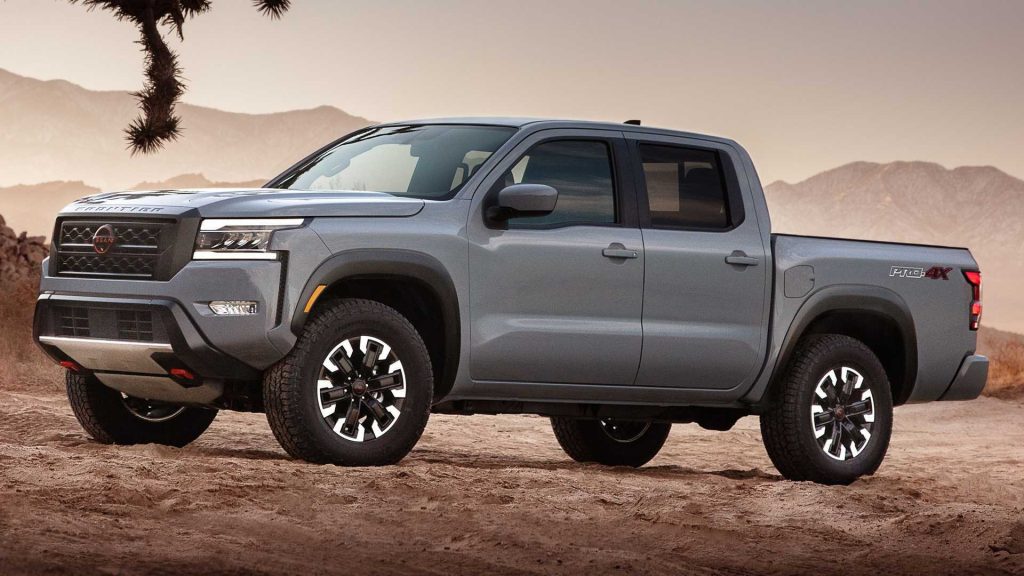
When properly equipped, the V6 Frontier is capable of towing up to 6,500 pounds. Fuel economy for the 2008 Frontier with the six-cylinder engine, automatic transmission, and two-wheel drive is rated at 15 mpg in the city and 20 mpg on the highway.
All 2008 Nissan Frontier models come standard with antilock disc brakes. Front-seat side airbags and full-length side curtain airbags are available as options across all trims. Additionally, buyers of the LE and Nismo trims can enhance safety with the optional Traction Package, which includes stability control, hill-start assist, and hill-descent control.
In government crash testing, the Frontier received four out of five stars for driver and front passenger protection in frontal collisions. In side-impact testing, it earned a perfect five-star rating for both front and rear-seat occupants.
The Insurance Institute for Highway Safety gave the Frontier its highest possible rating of “Good” in frontal-offset crash tests for occupant protection.
5. Chevrolet Silverado 1500 (2007–2013)
While newer Silverados hold alignment better, this particular generation was plagued with front-end issues. Ball joint and control arm wear was common, leading to frequent misalignment, pulling, and vibration. Even minor bumps could throw things out of spec.
Why it pulls: Weak front suspension components and aging geometry design
The 2008 Chevrolet Silverado 1500 stands as the embodiment of what a modern full-size pickup should be. It’s fully capable of handling all the traditional, heavy-duty truck tasks you see showcased in commercials, pulling out tree stumps and hauling heavy loads, while also offering the kind of comfort, refinement, and upscale touches that make it a viable option for everyday family use. In fact, if you’re so inclined, pulling stumps could even double as a weekend family activity.
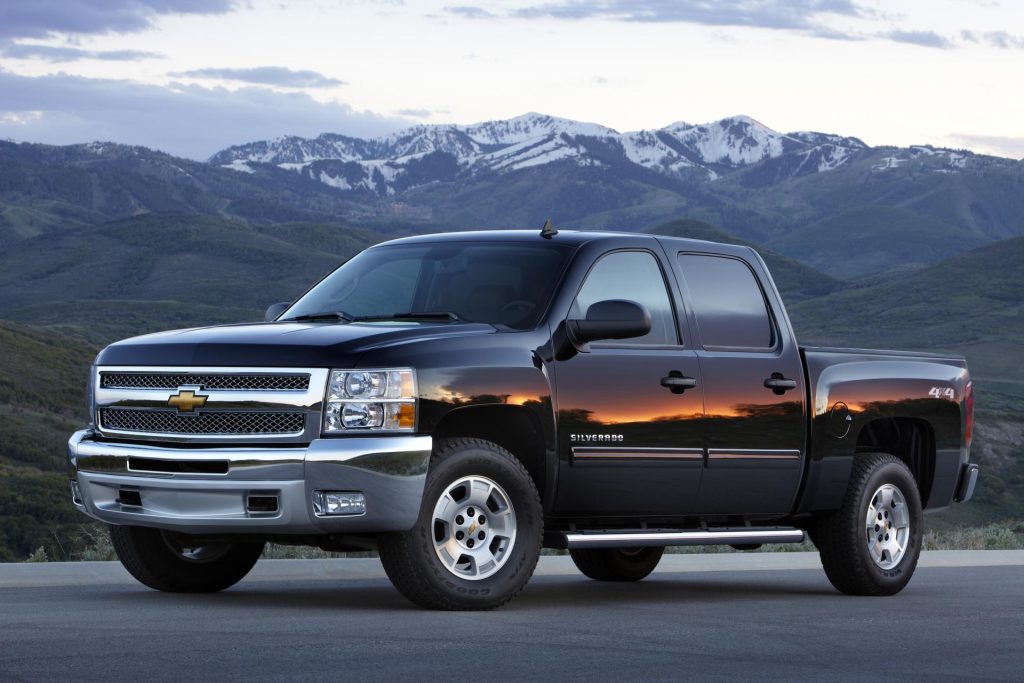
Longtime fans of the half-ton Silverado will know that it hasn’t always struck this ideal balance. The significant upgrades it received just last year marked a major turning point. Compared to its predecessors, the redesigned Silverado offers a far superior interior, enhanced with higher-quality materials and more precise build quality.
It also features bolder styling, a sturdier frame, and re-engineered steering and suspension components, all of which contribute to better ride comfort and improved handling. On top of that, Chevrolet integrated the latest safety features, including stability control and side curtain airbags.
A pickup truck’s alignment integrity depends on smart suspension design, durable components, and precise factory tolerances. If you want a truck that keeps your tires wearing evenly and your steering wheel centered, stick with models that have proven reliability in their geometry.
On the other hand, if you’re driving one of the misalignment-prone models listed here, regular inspections and proactive maintenance will save you a lot of long-term grief.

